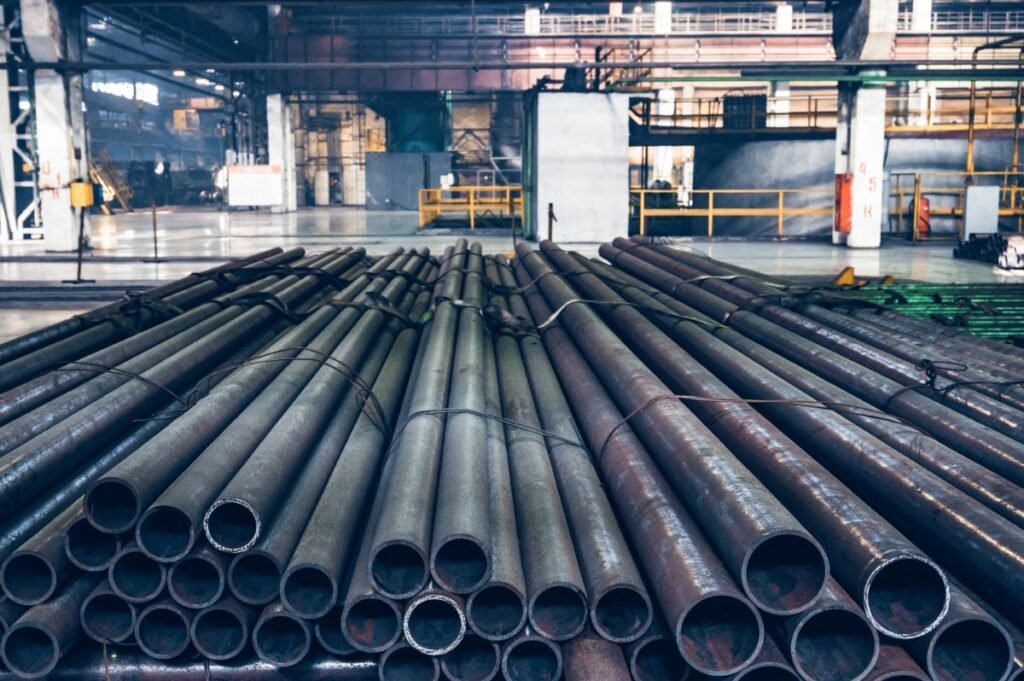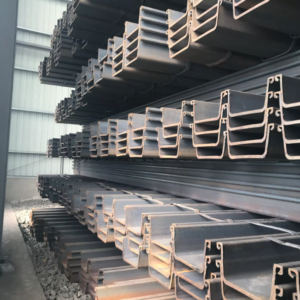Carbon Steel (Steel) Definition

According to the national standard GB/T 13304-91 “Classification of Steels”, steel is described as “a material with iron as the main component, with a carbon content generally less than 2%, and containing other elements.”
When the steel material or sample is subjected to tension, if the stress exceeds the elastic limit, even if the stress no longer increases, the steel material or sample will continue to undergo significant plastic deformation, which is called yielding. The minimum stress value at which yielding occurs is called the yield point.
Tensile Strength
This refers to the maximum stress value reached during the tensile process until fracture. It indicates the material’s resistance to fracture. Compressive strength, bending strength, and other related indicators also play a role.
Common Types and Applications of Steel
The first classification method is based on common usage categories.
Carbon Steel

Also known as plain carbon steel, it is an iron-carbon alloy with a carbon content of less than 2%. In addition to carbon, it usually also contains a small amount of silicon, manganese, sulfur, and phosphorus.
Carbon steel can be divided into three categories based on usage: carbon structural steel, carbon tool steel, and free-cutting structural steel. Carbon structural steel can be further divided into construction structural steel and mechanical manufacturing structural steel. Based on carbon content, it can be divided into low-carbon steel (c≤0.25%), medium-carbon steel (c=0.25%-0.6%), and high-carbon steel (c>0.6%).
According to the content of phosphorus and sulfur, carbon steel can also be divided into ordinary carbon (structural) steel (higher phosphorus and sulfur content), quality carbon steel (lower phosphorus and sulfur content), and advanced quality steel (even lower phosphorus and sulfur content). In general, the higher the carbon content, the higher the hardness and strength, but the lower the plasticity and ductility.
Ordinary Carbon Structural Steel
Also known as carbon steel, this type of steel mainly ensures mechanical properties. Therefore, its grade reflects its mechanical properties, and the number behind the letter Q represents the yield point. For example, Q275 indicates a yield point of 275 MPa. If the grade is followed by the letters A, B, C, or D, it indicates different grades of steel quality, with the lower the S and P content, the higher the steel quality. If the grade is followed by the letter “F”, it represents effervescent steel, and “b” represents semi-killed steel. If there is no “F” or “b” noted, it is killed steel. For example, Q235-AF represents A-grade effervescent steel with a yield point of 235 MPa, and Q235-C represents C-grade killed steel with a yield point of 235 MPa.
Carbon steel is low-cost and widely used in engineering and construction fields. For example, it is used for tubes in low-temperature and low-pressure boiler economizers and air preheaters. Q235a steel is commonly used for various water pipes, with a maximum operating temperature of 350°C.
GB/700 is the execution standard for carbon structural steel. This type of steel is generally smelted in a converter or open-hearth furnace, with the main raw material being pig iron and scrap steel. The steel has a higher sulfur and phosphorus content than quality carbon structural steel, generally with S≤0.050% and P≤0.045%. The content of other alloying elements brought in from the raw materials, such as chromium, nickel, and copper, is generally not more than 0.30%.
Carbon structural steel is generally not heat-treated and is used directly in the supply state. Typically, Q195, Q215, and Q235 steels have a lower carbon content and have good weldability, plasticity, and toughness, as well as a certain strength. They are usually rolled into thin plates, reinforcing bars, and welded steel pipes. They are used for structures such as bridges and buildings, as well as for manufacturing ordinary rivets, bolts, nuts, and other parts. Q255 and Q275 steels have a slightly higher carbon content, higher strength, and better plasticity and toughness, and can be welded. They are usually rolled into shaped steel, bars, and steel plates, used for structural components, as well as for manufacturing simple mechanical parts such as connecting rods, gears, couplings, and pins.
Quality Carbon Structural Steel
This type of steel must ensure both chemical composition and mechanical properties. Its grade is represented by two digits, indicating the average carbon mass fraction in units of one-hundredth of a percent. For example, 45 steel indicates an average carbon mass fraction of 0.45%; 08 steel indicates an average carbon mass fraction of 0.08%; and 20 steel indicates an average carbon mass fraction of 0.17%-0.22%.

20 steel is the most widely used pipe steel, used for boiler economizers, air preheaters, as well as steam compressed air and water pipelines in various other applications. It has the characteristics of high pressure resistance, long service life, good processing performance, and good weldability, and is widely used in industries such as industry, agriculture, and mining.
There are many national standards related to 20 steel. The most influential standards are: GB3087, also known as “Seamless Tubes for Low and Medium Pressure Boilers” (GB3087-2008), used for manufacturing various structural low and medium pressure boiler superheater tubes, water tubes, locomotive boiler superheater tubes, as well as large and small smoke tubes, and arch brick tubes made of quality carbon structural steel hot-rolled or cold-drawn (rolled) seamless tubes. It can also be used for other purposes. 20G is used for water wall risers, superheater steam low-temperature section pipelines, and other boiler tubes; 20g is used for boiler plates, such as the drum shell plates.
GBT699-2015 Quality Carbon Structural Steel. GB/T 711-2017 Hot Rolled Steel Plates and Strips for Quality Carbon Structural Steel.
Quality carbon structural steel is mainly used for manufacturing machine parts. It generally requires heat treatment to improve its mechanical properties. Depending on the carbon mass fraction, it has different applications. 08, 08F, 10, and 10F steels have higher plasticity and toughness, as well as excellent cold-forming and welding properties. They are often cold-rolled into thin plates and used for making instrument housings, automotive and tractor cold-stamping parts, such as automotive bodies and tractor cabs. 15, 20, and 25 steels are used for manufacturing small, light-duty, wear-resistant, non-high-stress carburized parts, such as piston pins and patterns. 30, 35, 40, 45, and 50 steels, after heat treatment (quenching + high-temperature tempering), have good overall mechanical properties, i.e., high strength and high plasticity and toughness, and are used for manufacturing shaft-type parts. For example, 40 and 45 steels are commonly used for manufacturing automotive and tractor crankshafts, connecting rods, general machine tool spindles, machine tool gears, and other light-duty shaft parts. 55, 60, and 65 steels, after heat treatment (quenching + medium-temperature tempering), have a relatively high yield strength, and are commonly used for manufacturing small-size (cross-section size less than 12-15mm) low-load springs, such as regulating and speed control springs, piston springs, and cold springs.
Carbon Tool Steel

Carbon tool steel is essentially high-carbon steel without alloy elements, with a carbon content in the range of 0.65%-1.35%. It has low production costs, easily available raw materials, and good cutting performance. After heat treatment, it can achieve high hardness and wear resistance. Therefore, it is widely used for manufacturing various cutting tools, molds, and measuring instruments. However, this type of steel has poor red hardness, which means that when the working temperature exceeds 250°C, the steel’s hardness and wear resistance will drop sharply, causing it to lose its working capability. In addition, carbon tool steel is not easy to quench, and large parts are prone to deformation and cracking during the process.
Carbon tool steel is mainly divided into the following types: T7, T8, T9, T10, T11, T12, T13, T8Mn, etc.
Alloy Steel
In addition to containing iron, carbon, and the unavoidable small amounts of silicon, manganese, phosphorus, and sulfur, it also contains a certain amount of alloying elements. The alloying elements in steel can be silicon, manganese, molybdenum, nickel, chromium, vanadium


